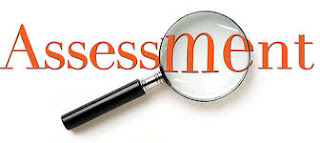PSYCHOLOGICAL ASSESSMENT REPORT – analysis (Part 2)
The
psychological assessment report of my first student in 2019 had also said the
following:
Emanuel of St James School was
tested on 08/01/2019 by Atiqah. At the time of the test, he/she was 9:6 years
old, thus, the norms for 9:6 to 10:5 years were used. *At Risk Quotient* The
overall 'At risk Quotient' was 2.2 This is in the lowest 2 percent for children
of this age and is considered a 'Strongly at risk' score.
*Profile* The profile of skills is Spiky, with
overall performance very significantly below average. There are relative
weaknesses in Phonological, Speed, Memory, Literacy, Fluid. There are relative
strengths in Balance, Dexterity.
There are five signs of dyslexia,
namely: - At Risk Quotient (ARQ) is 2.2 - Strongly at risk; - Spiky skills
profile; - Weak literacy (mean 1.25 - in the lowest 5 percent). - Discrepancy
of 2 points between fluid IQ and phonological skills - Weak phonological skill
(mean 1 - in the lowest 5 percent).
My
currents student’s inability to read, just like a majority of kids who are
classified as dyslexic’ is said to be that of ‘weak phonological skill’.
Here
is a definition of Phonological awareness from the internet:
Phonemic
awareness is important because it is critical to reading and
spelling success. ... Children who cannot distinguish and manipulate the sounds
within spoken words have difficulty recognizing and learning the necessary print=sound relationship that is critical to proficient reading and
spelling success.
The Phonological Awareness Test 2 is a
standardized assessment of
children's phonological awareness,
phoneme-grapheme correspondences,
and phonetic decoding skills.
As
I have repeatedly mentioned in my blog posts, about 20 to 30 percents of kids
will disengage from learning to read when what is subsequently taught is
inconsistent with what they have initially learned.
These
are the kids who disengage from learning to read because the print = sound
relationship was taught wrongly.
I
ask my students to give me the sounds of consonants b,c,f,m,l and s and when I
hear the extraneous sounds added to the consonants I am dead sure that these
kids are shut down kids.
That
is why I assure the parents that I will be able to get the kids to read within
4 months.
How
is a kid, who is predisposed to shutting down, going to get the phoneme
–grapheme correspondences when he has been taught that the phoneme for /c/
is cuh and /t/ is tuh. How is he going to know that ‘cuhahtuh’ is cat and
‘cuhohtuh’ is coat?
Note: Phonological Awareness is
the awareness of sounds only! It is void of print. No letters are
introduced, no sound to symbol correspondence is taught. Phonics
involves the eyes AND ears.




Comments